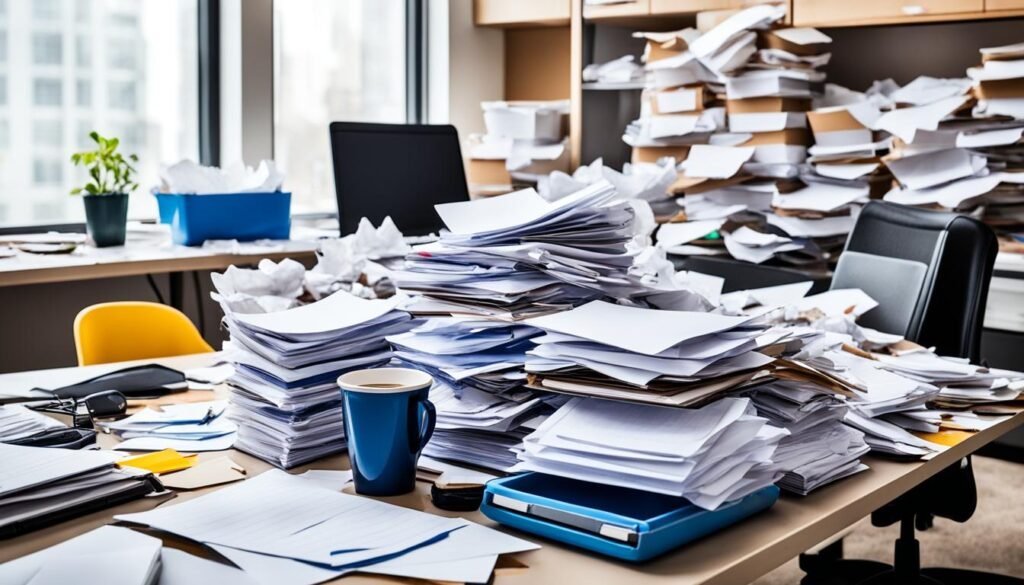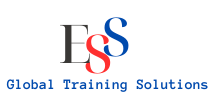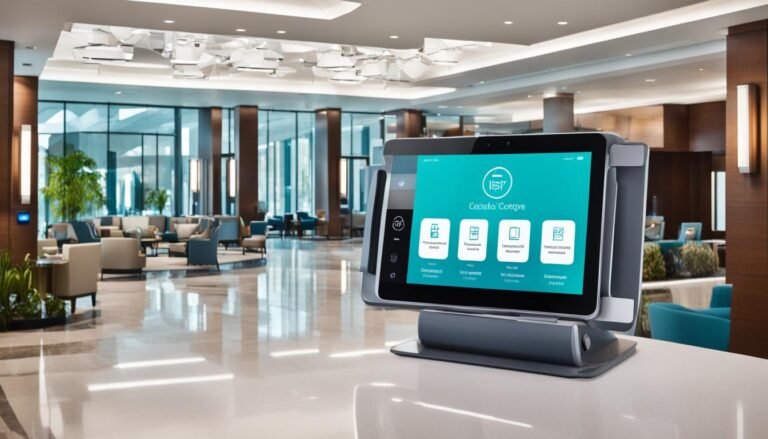Effective Housekeeping Operations and Management Tips
Welcome to our guide on how to make housekeeping better in the hospitality industry. Keeping things clean is vital for the success of any business that welcomes guests. We will give you tips to make things easier, make sure everything is clean, handle stuff properly, use tech, hire people, get rid of old stuff, keep things in order, and work well with others.
Now, let’s start with a story that shows why good housekeeping matters.
Let me introduce you to Sarah. She runs the housekeeping at a top-notch hotel. Sarah loves her work and knows a clean, inviting space is key for happy guests who come back.
One day, important guests came for a meeting. Sarah found a broken faucet in their room. She knew this needed fixing fast to not spoil their time. So, she got it fixed right away.
While waiting for the faucet to be fixed, Sarah and her team got to work. They all did their part to make sure the room was perfect. This quick team effort made everything shine before the guests even arrived.
The repair team arrived just in time to fix the faucet. Sarah’s quick thinking and her team’s hard work made sure the guests had a great stay.
This tale shows how important good housekeeping is for guests. By doing a great job, hotels can stand out in a crowded industry. It’s all about being efficient, checking everything is clean, and focusing on the little things.
Key Takeaways:
- Good housekeeping is key to making guests happy in the hospitality world.
- Clearing ways to be better and sticking to high clean and hygiene levels are crucial.
- Using the latest tech, picking the right people, training them well, and dealing with waste are all important areas to focus on.
- Looking after floor storage and choosing the best partners help make things run more smoothly.
- Putting effort into housekeeping makes sure guests leave with good memories.
What are Housekeeping Operations in Hotels?
The housekeeping department in hotels plays a crucial role. It ensures the place is clean and hygienic for guests. While you might think it’s all about rooms, it’s much more. Let’s dive into what the housekeeping department does in a hotel.
1. Cleanliness and Hygiene:
The main job of the housekeeping team is to keep everything clean and safe. This is not only limited to guest rooms. It also includes areas like lobbies, halls, restaurants, and gyms. Making sure everything is neat and hygienic makes guests feel welcome and comfortable.
2. Inventory Requisitions:
The department manages supplies to keep daily tasks running smoothly. They order things like toiletries, linens, and cleaning supplies. Keeping an eye on inventory means guests always have what they need.
3. Laundry Services:
Handling the hotel’s laundry is a big task for housekeeping. They gather, wash, dry, fold, and give out linens. Fresh linens are key to making the hotel feel clean and cozy.
4. Lost and Found:
They also take care of lost items. Staff collect things left behind, keep them safe, and return to the owner. This quick action keeps guests happy and proves the hotel is trustworthy.
5. Room Theft and Loss:
Preventing thefts and losses in rooms is also part of their job. Staff are alert for any unusual activity or missing items. Their watchful eye helps keep the hotel a safe place.
Housekeeping might not make money directly. But, it helps save by caring for the hotel’s resources. Good housekeeping is vital for a spotless, safe, and welcoming place. This leads to happy guests and a great stay at the hotel.
How to Optimize Hotel Housekeeping Operations?
Keeping a hotel clean and running smoothly requires a lot of work. To do this, hotels can do several things. They can make cleaning methods better, keep to certain standards, handle things well, use technology, pick the right people, and work with good suppliers. Let’s look closer at these steps.
Streamlining Processes and SOP Optimization
Streamlining means making housekeeping tasks work well with others. This helps everything to run better. Also, setting up and adjusting rules can stop problems and make things simpler.
Standardizing Cleanliness and Hygiene Standards
Since the COVID-19 pandemic, being clean is more important than ever. Having clear rules and doing regular checks keeps everything safe. Plus, training staff helps them do their jobs better.
Effective Inventory Management and Technology Integration
Knowing what supplies you have and need means you can save money and time. Using tech like management software can help a lot. It makes keeping track of supplies and ordering them easier.
Staff Hiring, Training, and Retention
Having the right people and keeping them happy is key to good cleaning. To get and keep good workers, use a good hiring system, train them well, and recognize their hard work.
Discarding Processes and Waste Management
Getting rid of trash the right way is important. It keeps things clean and safe. And, it shows you care about the environment.
Maintaining Pantries on Each Floor
Having supplies close by saves time for cleaners. Checking the supplies often to make sure they have enough is a must. It keeps work going smoothly.
Vendor Selection and Collaboration
Good suppliers mean you get good products. Working closely with them helps. This way, everyone is on the same page about what’s needed and when.
By focusing on keeping a hotel’s cleaning and operations at their best, cleanliness and guest satisfaction can get better. Plus, the hotel runs more efficiently.
Prevent Slips, Trips, and Falls
It’s crucial to keep workplaces clean to stop falls. This happens by making sure floors are dry and clean. Good flooring that’s not slippery helps a lot too. If an accident does happen, it’s important to report it quickly. Knowing about near-misses is also key to stopping future accidents.
When spills happen, clean them up right away. This stops people from slipping. Also, watch out for things like loose cords. Every now and then, check to make sure the floors are in good shape.
Giving workers safety gear is important. Shoes that don’t slip and fall protection equipment help keep people safe. A tidy workplace and being ready for any accidents keep everyone well.
Accident Reporting and Investigation
If someone slips, trips, or falls, report it right away. Finding out why it happened helps stop it from happening again. Fixing any dangers found keeps the workplace safe for everyone.
“Accident reporting and investigation are critical components of a proactive safety program. By promptly identifying and rectifying potential hazards, we can ensure a safe working environment for all employees.” -Jane Smith, Health and Safety Manager
Cleaning up and staying organized helps cut down on accidents. Also, checking things often, having good floors, and using safety gear all make the workplace safer. These steps lower the chances of people getting hurt at work.
Eliminate Fire Hazards
Keeping your house or workplace clean is key to reducing fire dangers. By using the right methods, fires can be made less likely. It’s important to take these steps for a safer place:
1. Waste Disposal:
Dispose of waste properly to keep it from piling up. Get rid of it every day to avoid extra fire risks.
2. Storage of Combustible Materials:
Put flammable stuff in metal boxes to avoid fires starting by accident. This makes fires smaller and stops them from going further.
3. Fire Safety Risk Assessment:
Check often for places or things that might start a fire. Looking for these dangers lets us stop fires before they happen.
4. Separation of Ignition Sources:
Keep things that can start fires away from stuff that burns easily. Have rules to be sure dangerous things are kept safe.
5. Good Housekeeping Practices:
Keeping things tidy helps lower the chance of fires. Always clean up and keep the area neat.
6. Fire Detection and Warning Systems:
Use alarms and detectors to find fires early. This way, people can get out fast when there’s a fire.
7. Fire-Fighting Equipment:
Have fire extinguishers and fire blankets ready. Check them often to make sure they work.
8. Clear Fire Exits and Escape Routes:
Make sure everyone can leave easily if there’s a fire. Signs and clear paths help people get out without problems.
Following these safety steps and making cleanliness a priority, organizations can cut down on fire dangers. This makes workplaces safer for everyone.
| Fire Hazards | Housekeeping Measures |
|---|---|
| Accumulation of combustible waste | Daily disposal of combustible waste |
| Improper storage of combustible materials | Store in covered metal receptacles |
| Potential sources of ignition | Regular fire safety risk assessment |
| Mixing ignition sources with flammable substances | Separate ignition sources |
| Poor housekeeping practices | Maintain cleanliness and organization |
| Lack of fire detection and warning systems | Install reliable systems |
| Inadequate fire-fighting equipment | Equip with appropriate devices |
| Obstructed fire exits and escape routes | Maintain clear and unobstructed routes |
Control Dust
Keeping dust under control is very important in many places, especially those that make a lot of dust. Dust doesn’t just make things messy; it can also hurt people’s health. To keep a workplace safe and clean, we must use ways to stop different types of dust from spreading.
Silica dust is a big issue for workers in jobs like construction, mining, and quarrying. Breathing in silica dust can cause serious diseases like silicosis and lung cancer. To keep workers safe, we should try to stop the dust before it spreads. This means using special tools that catch dust right where it’s made.
“Silica dust is a major concern in industries where workers are exposed to it on a regular basis. By implementing effective dust control measures, we can ensure the safety and well-being of our employees,”
Wood dust is also a threat, especially in places that work with wood a lot. Breathing in wood dust can cause lung problems and a higher chance of getting cancer in your nose. To keep this dust contained, it’s key to have good systems that suck up the dust and keep the air moving. Plus, you need to keep everything clean and well maintained to limit how much dust gets into the air.
Other kinds of dust found in factories and other work sites can stick around in the air. Even though these might not be as dangerous as silica or wood dust, they’re still a risk. To lower this risk, it’s smart to clean often, use damp methods to control dust, and wear the right safety gear like masks.
Avoid Tracking Materials
Keeping materials from being tracked is key to a clean workplace. With the right steps, companies can lower the risk of spreading dirt or germs. This makes the place safer for everyone.
Work-Area Mats
Using work-area mats is a smart move. They catch dirt and debris off of shoes. This keeps the clean areas really clean. Mats need to be cleaned often to work well.
Cleaning Protocols
Cleaning is a big part of stopping material tracking. Places should be swept, mopped, or vacuumed a lot. This gets rid of things that could be carried somewhere else. Using the right cleaning products is also important.
Proper Disposal of Toxic Materials
Getting rid of toxic materials the right way is necessary. Companies need clear rules for throwing these away. This stops them from causing harm. It also keeps the environment safe.
Cross-Contamination Prevention
Stopping the spread of contaminants is crucial for safety. Teaching workers how to stay clean helps, as does using the right gear like gloves or masks. Good ways of working also help a lot.
Industrial Hygiene Testing
Testing the cleanliness of a place is very important. It shows if the efforts to stop tracking are working. Through tests, companies make sure they’re following safety laws.
| Effective Measures to Avoid Tracking Materials | Benefits |
|---|---|
| Placement of work-area mats | Prevents dirt and contaminants from being tracked into clean areas |
| Implementation of specific cleaning protocols | Removes loose materials that could be transported to other areas |
| Proper disposal of toxic materials | Prevents spread and potential harm from hazardous substances |
| Cross-contamination prevention measures | Reduces the risk of contamination between different areas |
| Regular industrial hygiene testing | Allows for continuous improvement and assessment of prevention measures |
With these steps, companies can keep their places clean and safe. Regular checks, training and handlings can help avoid tracking materials. This keeps the workplace in top shape.
Declutter

Decluttering your workplace is crucial for a safe and efficient work environment. It helps in many ways. For example, it makes it easier to work, move around, and stops safety problems. Tidying up and using smart ways to organize makes work go smoother and keeps everyone happy.
It’s vital to keep key areas free from things that might get in the way. This means making sure aisles, stairways, exits, and panels are clear. Doing this not only keeps everyone safe but also helps people move freely.
Make sure trash cans are emptied often. Putting trash bins in easy-to-reach spots helps keep things clean. It also stops trash from piling up.
Use good organization ideas to stop clutter from building up. This means having the right places for tools and supplies. Knowing where everything is means less mess.
Don’t forget to regularly clean up and get rid of stuff you don’t need. Doing this keeps your space neat and makes it easier to work in.
Dealing with clutter by managing how we use space can really help a business. Not only does this make things safer, but it also makes people happier at work. A tidy place lets everyone focus and do their job well.
| Benefits of Workplace Decluttering: | Strategies for Effective Decluttering: |
|---|---|
|
|
Conclusion
Keeping a place clean and safe is crucial in hotels and workplaces. It makes everyone feel welcome. To achieve this, it’s key to have good systems in place and follow strict cleaning standards. Also, managing what’s needed, like supplies, and using the right technology can help a lot.
Adding to this, it’s important to have the right people. They should know how to clean, manage waste, keep things organized, and pick good products. Doing these things well helps keep the place safe and makes visitors happy. Cleaning and hygiene must always come first to please guests and avoid accidents at work. It also boosts how efficient we are.
To sum up, great housekeeping brings a lot of good things. It keeps places clean, safe, and makes people happy. By focusing on the details and using the best methods, places can be welcoming for everyone. This is good for both the staff and the people who visit.







